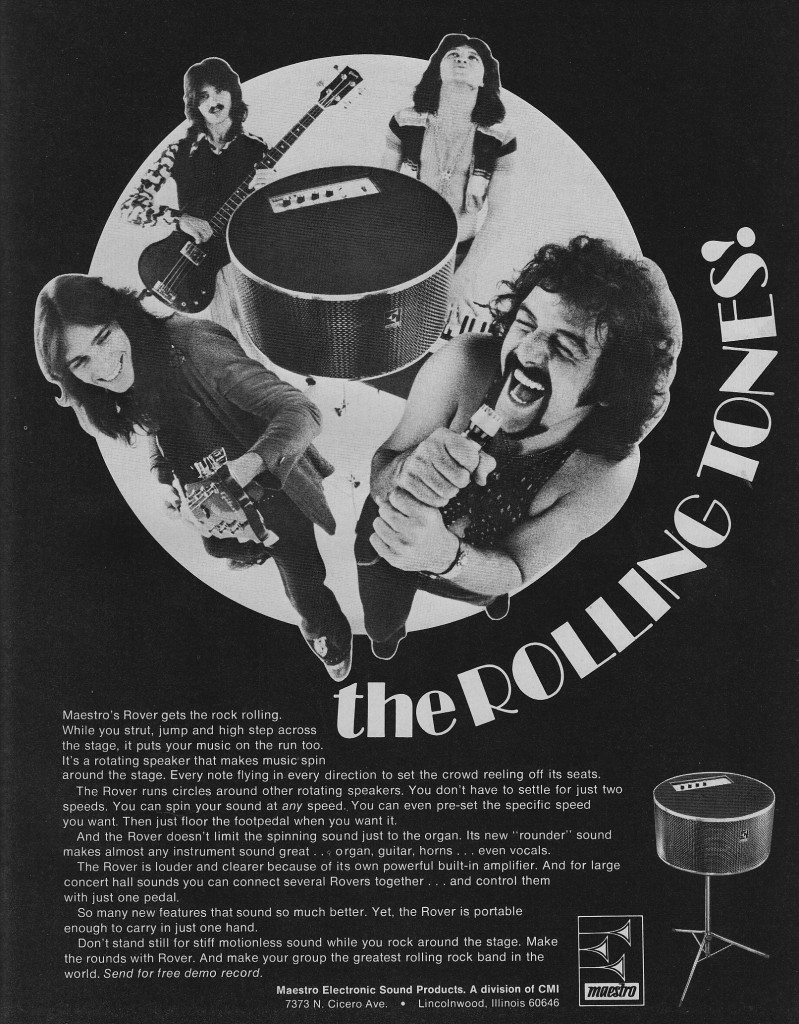 Today at PS dot com: just a quick look at some of the state-of-the-art in guitar/keyboard FX of 1972, courtesy the Maestro division of Chicago Musical Instruments, also parent to the Gibson brand of instruments. Maestro made a lot wackier stuff than even the above-depicted Rover (a mini-leslie-on-a-stick) – Rhythm and Sound, anyone? – and we’ll get to it all eventually. There’s only so much past I can write about, people…
Today at PS dot com: just a quick look at some of the state-of-the-art in guitar/keyboard FX of 1972, courtesy the Maestro division of Chicago Musical Instruments, also parent to the Gibson brand of instruments. Maestro made a lot wackier stuff than even the above-depicted Rover (a mini-leslie-on-a-stick) – Rhythm and Sound, anyone? – and we’ll get to it all eventually. There’s only so much past I can write about, people…
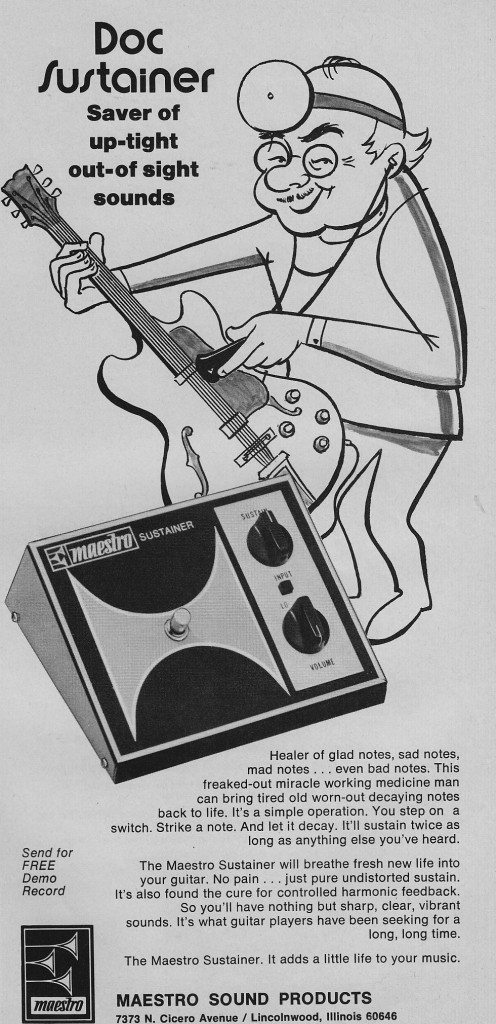 Above: This does not appear to be a legitimate doctor. At best, he will likely ‘goose’ you whilst you are subdued via anesthesia. I don’t really understand why a sleazy physician makes a good metaphor for a compression pedal.
Above: This does not appear to be a legitimate doctor. At best, he will likely ‘goose’ you whilst you are subdued via anesthesia. I don’t really understand why a sleazy physician makes a good metaphor for a compression pedal.
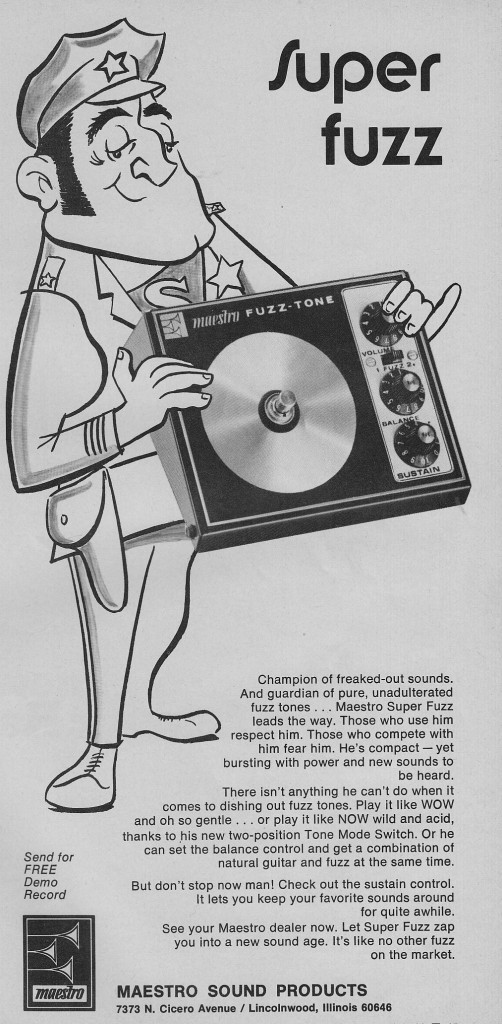 Above: SuperFuzz. It’s like a smug cop. Ok…
Above: SuperFuzz. It’s like a smug cop. Ok…
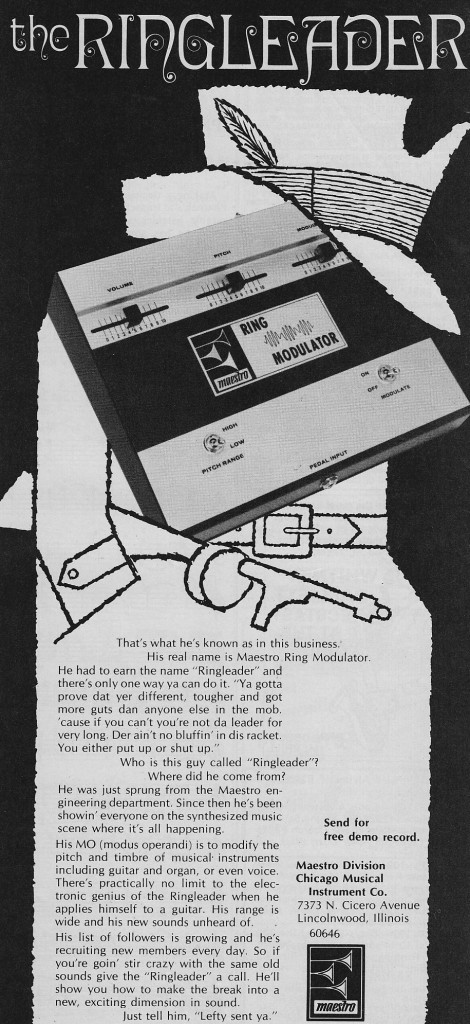 Above: the Maestro Ring Modulator. This is a rare one, I believe. Do you get the feeling that this advert tells NOTHING about what this thing actually sounds like, other than it makes ‘unheard of sounds?’ This is likely because ring mod is really very hard to describe in words, and its effects really can be incredibly varied. It actually synthesizes new pitches by outputting the sum and difference (in hertz) of your monophonic performance input and some second signal – in this case, likely an internal ‘carrier’ oscillator whose pitch is determined by the panel fader there. I love ring mod. It’s great that a few companies (Moog, EH) are making ring mod pedals again. A truly wild sound with a ton of applications for modern music.
Above: the Maestro Ring Modulator. This is a rare one, I believe. Do you get the feeling that this advert tells NOTHING about what this thing actually sounds like, other than it makes ‘unheard of sounds?’ This is likely because ring mod is really very hard to describe in words, and its effects really can be incredibly varied. It actually synthesizes new pitches by outputting the sum and difference (in hertz) of your monophonic performance input and some second signal – in this case, likely an internal ‘carrier’ oscillator whose pitch is determined by the panel fader there. I love ring mod. It’s great that a few companies (Moog, EH) are making ring mod pedals again. A truly wild sound with a ton of applications for modern music.
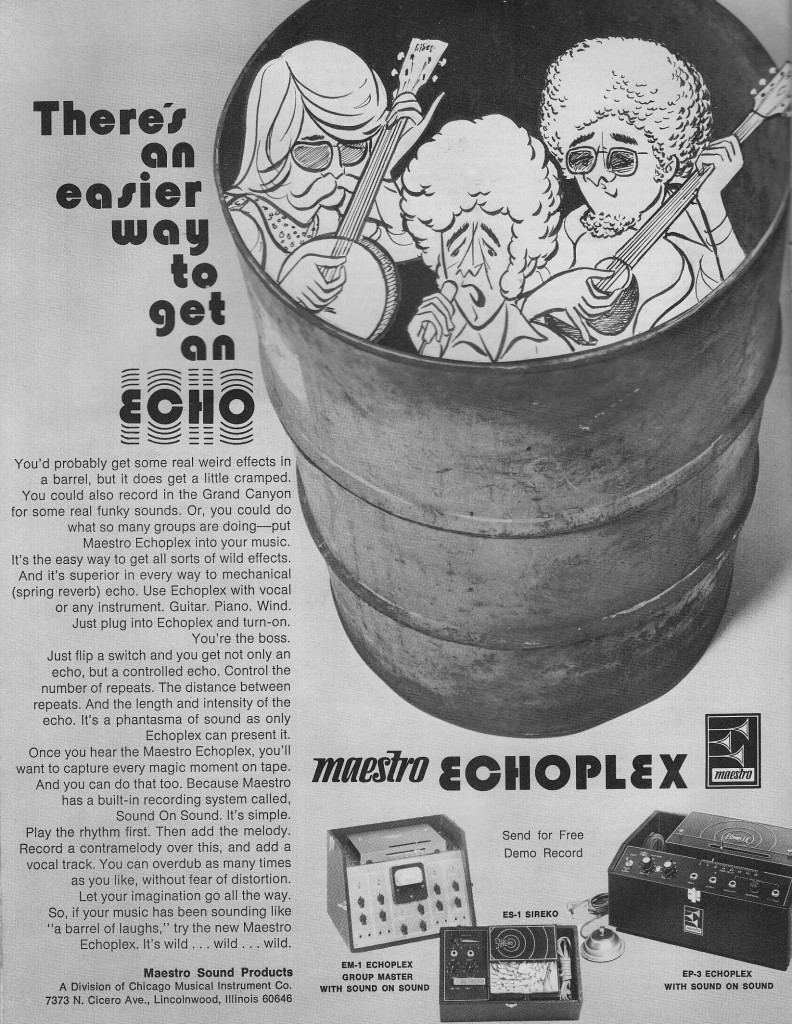 Above: The Echoplex line of 1972. The EM-1, ES-2, and EP-3. Better than hanging out in a trash can. Kinda need one of these.
Above: The Echoplex line of 1972. The EM-1, ES-2, and EP-3. Better than hanging out in a trash can. Kinda need one of these.
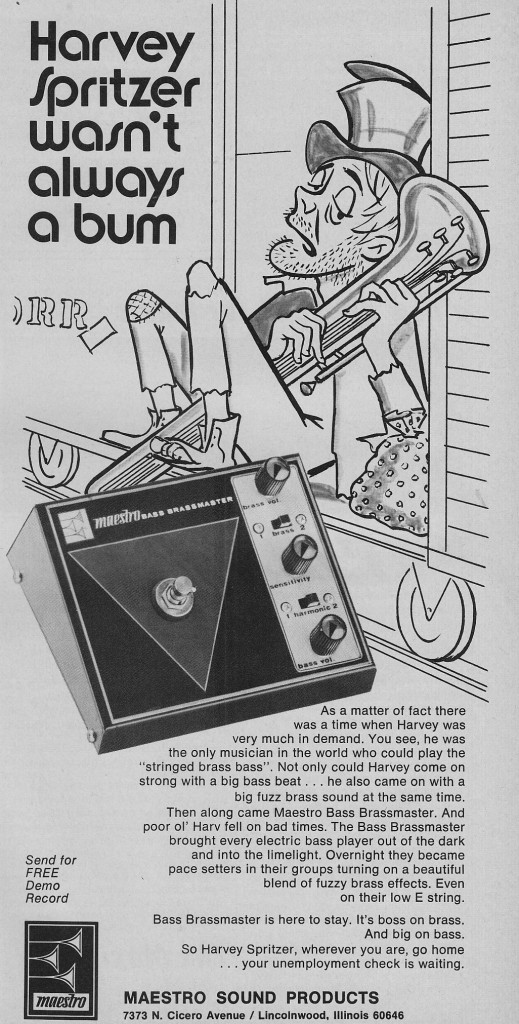 Above: The Bass Brassmaster. Tuba/trombone/bass sax players end up homeless/hobos/vagrants as a result. Great, thanks.
Above: The Bass Brassmaster. Tuba/trombone/bass sax players end up homeless/hobos/vagrants as a result. Great, thanks.
4 replies on “Maestro FX units of 1972”
They actually sold some of this stuff.
The Ring Modulator didn’t “spring from the Maestro Engineering Department”, it sprang from Tom Oberheim, who sold the design to Maestro’s marketing department. And their Phase Shifters too. There was the Mini-Phaser, and the organ player in my high school garage band had the big three switch Maestro PS-1A phaser pedal she used with her Vox Continental organ – it was the poor band’s Leslie! The three fat lever switches were speed controls, and the speed accelerated and decelerated like a Leslie. But the full effected sound was a bit too much, so we came up with a trick to make it more “natural” sounding – split the signal with a Y-cable and mixed the phased and dry signals using the two channels in her Gibson Thor amplifier. (That’s right… Thor!)
Great Maestro Phase Shifter page here:
http://www.wingspreadrecords.com/maestro_ps1_page.html
Looks like David Gilmour was a big Maestro Rover user:
://www.gilmourish.com/?page_id=83
I STILL say that if you want to make something that will SELL, make a good small guitar amp like the Univalve, that will act as a preamp/controller for stock Leslies-both the 122/147 and the later 11 pin ones. People playing places where there is a house Hammond and Leslie can plug it in and use it if there is no Hammond player, and the same if going in a studio.
I’m looking for info on a completely different FX unit called the Gibson Maestro – it looked a bit like part of an organ with rocker switches. Ian Underwood put his sax thru one on Zappa’s Hot Rats album. Thanks, Mick White (UK)